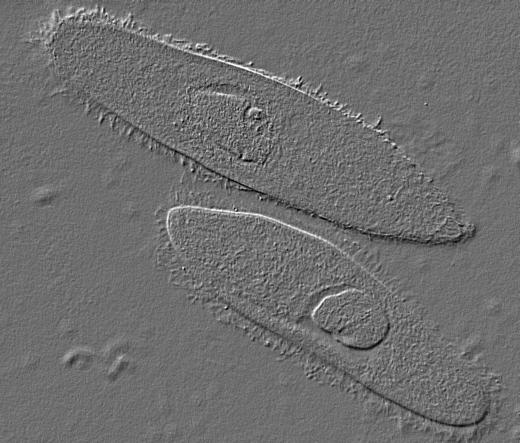What are the Smallest Genomes?
 Michael Anissimov
Michael Anissimov
Genomes are the code of life -- the molecular blueprint that builds every living organism. Found coded in DNA in the nucleus of the cell, the human genome has about 3 billion amino acid base pairs and 20,000-25,000 protein-coding genes. This is relatively typical with a metazoan organism. Genome size does not directly correlate to the complexity of the organism, but does abstractly, especially when comparing genome lengths between multicellular and unicellular organisms. Parasites have the smallest genomes of any multicellular organism, having undergone a process known as genetic streamlining.
Some organisms have truly tiny genomes, the smallest genomes yet discovered. As of 2011, the smallest reported genome found outside an organelle was the Tremblaya genome, which has just 121 genes, and is found in a bacteria found in mealybugs. Other extremely small genomes include

The second smallest non-viral genome is found in Nanoarchaeum equitaans, a thermophilic archaea found among hydrothermal vents on the Atlantic Ocean floor, around the Mid-Atlantic Ridge. N. equitaans is a highly unusual organism, lacking certain metabolic pathways found in practically every other living thing, and being given its own phylum in domain Archaea. Its genome is 490,885 base pairs long. This is among the smallest genomes of any living thing. Like C. rudii, N. equitaans is an obligatory symbiont of another organism, in this case, the archeon Ignicoccus, from which it gets many essential biomolecules.

Of all the smallest genomes mentioned previously, the genome-bearing organism was an obligatory symbiont of another. But the smallest genome out of any free-living organism can be found in the bacteria Mycoplasma genitalium, which is found on the respiratory tracts and genitals of primates, such as humans. This bacterium was first isolated in 1980 from urethral specimens of two male paints with inflammation of the urethra. Thought to be first among the smallest genomes under the discovery of C. rudii in 2002, M. gentalium has only 582,970 base pairs and 482 protein-coding genes. M. genitalium has been used as a model for the Minimal Genome Project, which seeks to create a bacterium with the minimum genome necessary to sustain life.
AS FEATURED ON:
AS FEATURED ON:












Discussion Comments
@hamje32 - I think it’s the functionality of the bacteria that defines it as simple, not just its makeup.
For example one of the simplest bacteria mentioned in the article helps to suck sap. That’s pretty simple if you ask me, nothing complicated there.
As to whether bacteria are fundamentally simple, you would have to define simplicity, wouldn’t you? I believe that they are, when you consider the billions of cells that are needed to create more complex organisms like animals and human beings.
That’s my two cents worth, but I don’t think things like lice are all that complicated. We simply haven’t understood everything just yet.
@miriam98 - Well, I’m not a scientist and I suspect you are not one either. The genetic map of the human DNA has been quite a breakthrough as you rightly pointed out.
I think it will only be a matter of time before scientists can create the simplest of bacterium. As to your question about the challenges for doing so, I think it has to do with the chemical nature of life.
What, exactly, is life? We can create machines and we can mix chemicals, but can we create chemical machines? This is life as we currently understand it – or at least as I understand it.
Would the first synthetic bacteria most likely be something that is electronic or mechanical in nature instead? Would it use nano technology? I may be in over my head with this line of questioning but I think this is where the challenges lie.
In my opinion DNA genomes are testament to the fact that there is no such thing as simple celled life. If the second smallest genome is nearly half a million base pairs long, then there is nothing simple about it in my opinion. (I am of course not a scientist.)
We have yet to get to the place where we can create even the simplest of genomes artificially, although scientists have become quite adept at splicing and dicing existing genomes.
Scientists have mapped the human genomes but creating simple bacteria is still a difficult feat. Why is that? It can only be explained by the fact that there are layers of complexity behind the superficial “simplicity” of bacterial life.
Post your comments